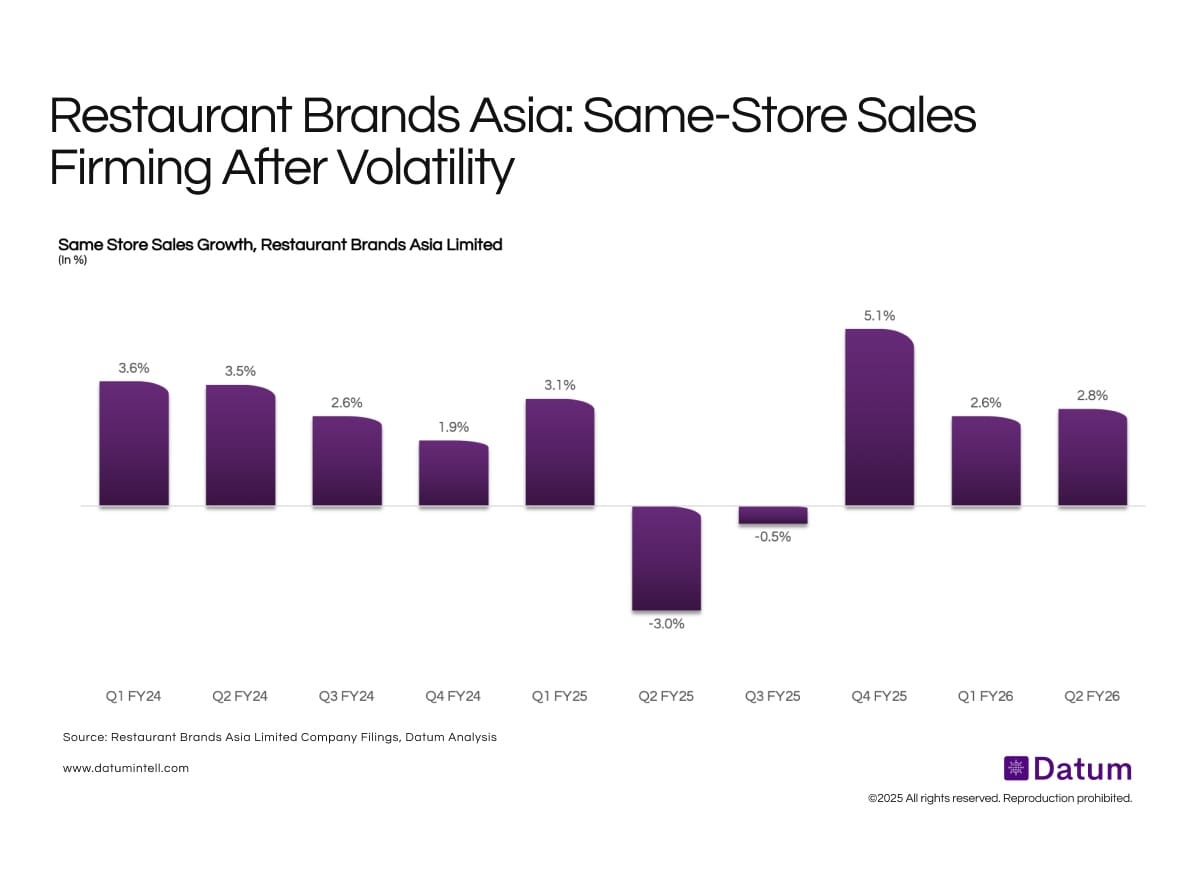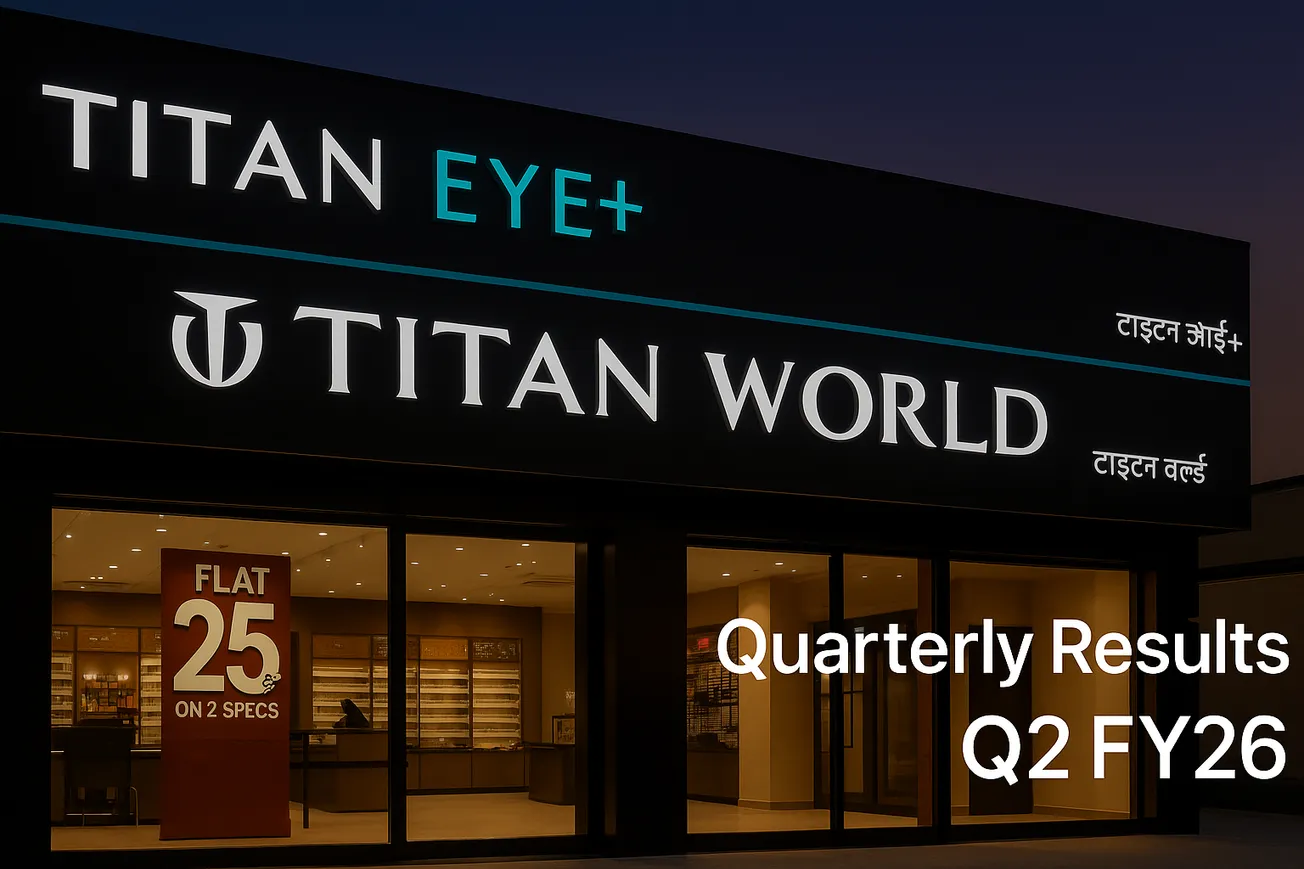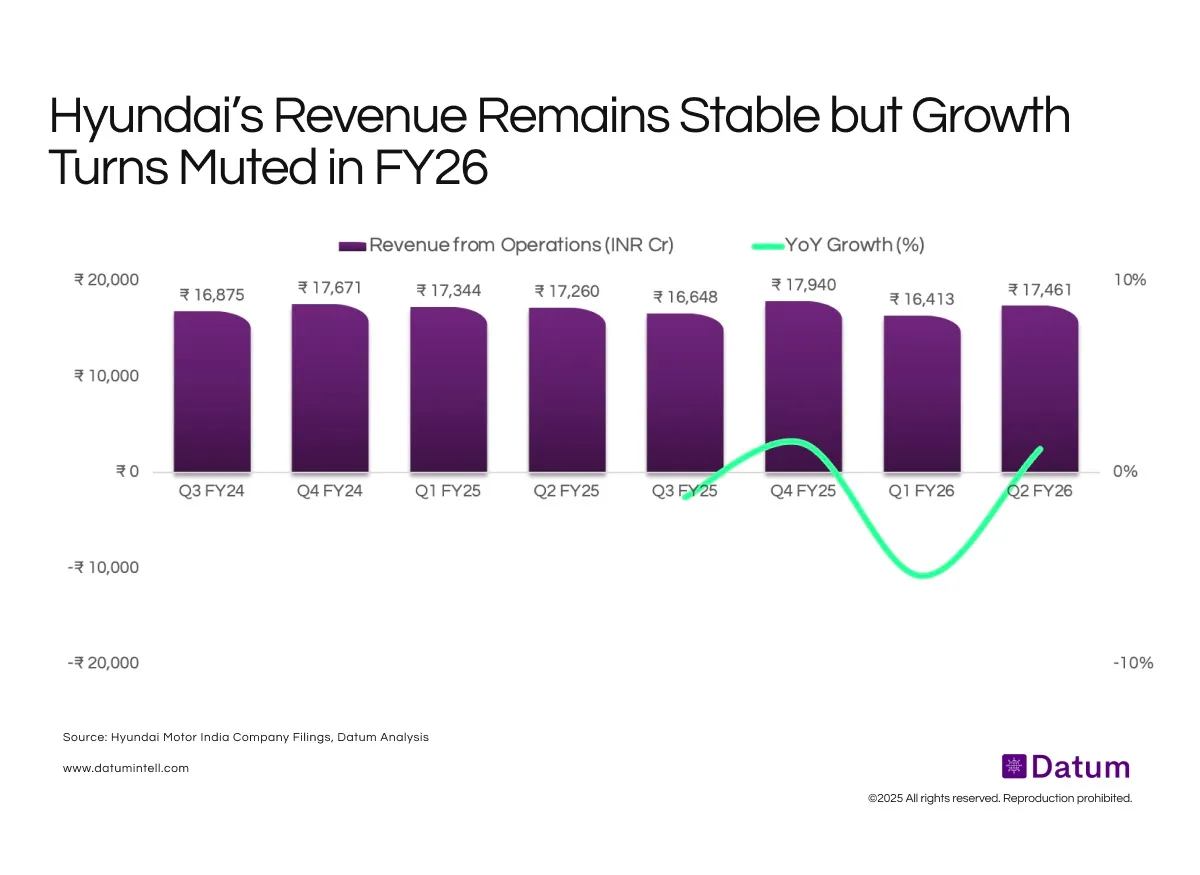Table of Contents
Restaurant Brands Asia Limited's same-store sales performance from Q1 FY24 through Q2 FY26 illustrates the operational challenges facing quick-service restaurant operators in Asian markets amid evolving consumer behaviors, competitive intensity, and macroeconomic headwinds. As a key franchisee operating Burger King outlets across the region, the company's performance serves as a bellwether for Western QSR brands navigating price-sensitive emerging markets.
The company currently operates 533 restaurants in India as of Q2 FY26, with ambitious expansion plans targeting 60 to 80 new openings annually to reach approximately 800 restaurants by FY29.

Key Insights
- Initial Deceleration and Sudden Contraction (FY24-FY25) Performance began deteriorating from 3.6% growth in Q1 FY24, declining steadily through 1.9% in Q4 FY24 before turning negative. The company experienced its steepest decline of -3.0% in Q2 FY25, followed by a marginal -0.5% in Q3 FY25. This pattern suggests not a temporary shock but rather persistent demand weakness, likely driven by combination of inflation-pressured consumers trading down, increased competition from local chains, and menu fatigue.
- Sharp Recovery and Stabilization (FY25-FY26) Q4 FY25 marked an inflection point with 5.1% growth, the strongest performance across the entire period. However, this spike proved unsustainable, with growth moderating to 2.6% in Q1 FY26 and 2.8% in Q2 FY26. The Q4 surge likely reflects successful promotional campaigns, value menu introductions, or seasonal factors, while the subsequent stabilization around 2.5-3.0% may represent the company's normalized growth rate in current market conditions.
- The Margin Expansion Paradox Despite modest same-store sales growth, the company maintains a robust gross profit margin of 68.3% in Q2 FY26 and targets approximately 70% by FY29. This margin trajectory, improving even as comparable sales growth remains subdued, suggests the company is prioritizing profitability over traffic growth through menu pricing discipline, operational efficiency gains, and potentially reduced promotional intensity. The 170 basis point margin expansion planned over three years indicates management believes the business can support higher pricing without catastrophic traffic losses.
- The New Steady State Recent quarters suggest Restaurant Brands Asia has found a baseline performance level significantly below its FY24 peak. Growth hovering around 2.5-3.0% indicates the company has arrested the decline but lacks catalysts for returning to historical momentum. This stabilization at lower levels reflects structural shifts in consumer preferences and competitive dynamics rather than cyclical pressures.
What This Means
Restaurant Brands Asia faces a critical strategic trade-off between aggressive network expansion and same-store sales momentum. The company's plan to add 267 restaurants over three years (50% base growth) while same-store sales hover around 3% creates unit economics pressure that only margin expansion can offset. Success requires executing a delicate balance: new units must achieve productivity levels justifying capital deployment even as the existing base demonstrates limited organic growth.
The margin expansion target to 70% provides strategic flexibility but raises questions about long-term competitiveness. Achieving 70% gross margins while growing same-store sales only 2-3% annually suggests the company is extracting value from existing customers rather than expanding the addressable market. This approach works if the Indian QSR market remains underpenetrated and new unit growth drives absolute profit expansion, but becomes vulnerable if local competitors gain share by offering superior value propositions.
The company must determine whether low-single-digit growth represents an acceptable new normal that can be offset by aggressive unit expansion and margin discipline, or whether more fundamental repositioning is required. With Western QSR brands increasingly challenged by nimble local competitors, Restaurant Brands Asia's ability to simultaneously expand its footprint by 50%, improve margins 170 basis points, and stabilize same-store sales around 3% will test whether scale and efficiency can compensate for eroding brand momentum.







